Mario Kart 20th Anniversary - 20 reasons its lasted
Nintendo's series is 20 years old... here's 20 reasons for its staying power
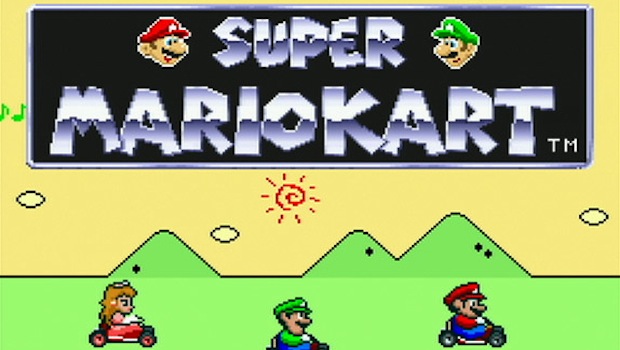
20 reasons to love Mario Kart
When Nintendo released the original Super Mario Kart, it's easy to forget just how much skepticism greeted the crossover racer. Super Mario? In a kart?? It'll never catch on, said the people of 1992, before returning to proven cultural mainstays like Young MC and Sally Jessy Raphael. 20 years later, the series has become a fan favorite and an obligatory fixture in any Nintendo lineup.
In the intervening years, Pluto ceased to be a planet, Yugoslavia ceased to be a country, and Duke Nukem Forever ceased to be a game people wanted all while Mario Kart kept getting Mario Kartier than ever. How's the series remained evergreen for so long? Here's 20 things Nintendo got and keeps on getting right.
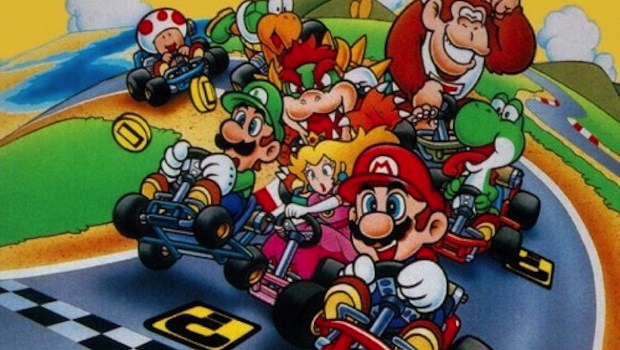
It invented the Mascot Racer
Before Mario Kart, racing titles were serious affairs starring manly men in strap-on sunglasses and leather racing onesies. Every car was a Porsche or Ferrari, and it wasn't uncommon for games to come boxed with a free spanner for all the fine-tuning you'd be expected to perform none of which would be visible in-game, because it was all running on technology less advanced than that found in most modern air-conditioning units. You may think we're exaggerating, but if you lived in a world where Hard Drivin' was considered impressive, you'll know what we mean.
Enter Mario Kart, which traded immersive 3D graphics for brightly-colored, high-speed cartoon fantasy. Owing more to the Super Mario series than to any given racing title (with the possible exception of Nintendo's own F-Zero), the game's inclusion of familiar characters and settings was more than a gimmick: it provided continuity for newcomers who might otherwise have passed on another racing game. That gambit would later enable series like Crash Team Racing, Sonic Drift and the upcoming LittleBigPlanet Karting.
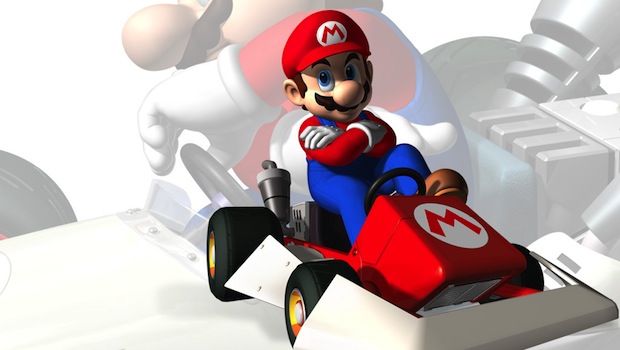
It expanded Mario's horizons
You may've bought your Super Nintendo to make Mario run from left to right jumping over obstacles; but after a session or two on SMK, the possibilities seemed considerably greater. The NES era had seen Mario flirt with expanding his career options, but it was post-Kart that players got a feel for the full ambition of this hopelessly underqualified blue-collar everyman.
Suddenly Mario was sporting like nobody's business, as well as experimenting with further twists such as the Square collaboration Super Mario RPG. This newfound open-mindedness didn't always pay off (pity the kids who unwrapped Mario is Missing! expecting a new Mario World), but it readied players for even greater diversification in later eras.
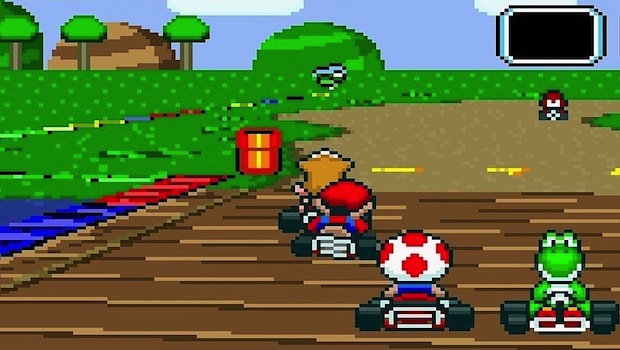
It's what Mode 7 was good for
The SNES' vaunted Mode 7 a hardware trick allowing backgrounds to stretch and scale in 3D space may be the missing link between old-time 2D gaming and contemporary 3D play. But for every skilful in-house use such as F-Zero or Pilotwings, players were forced to contend with dozens of third-party hit-and-misses with obligatory chunky-pixels interludes. And that's why Nintendo has never released another console based around innovative, easily-misused technology.
But it was Mario Kart that made the strongest yet case for this exclusive innovation, triggering a wave of imitations on Nintendo's and other platforms. The game's signature flattened perspective saw bulking up in later entries, but still gets a look-in via later titles' Retro Cups.
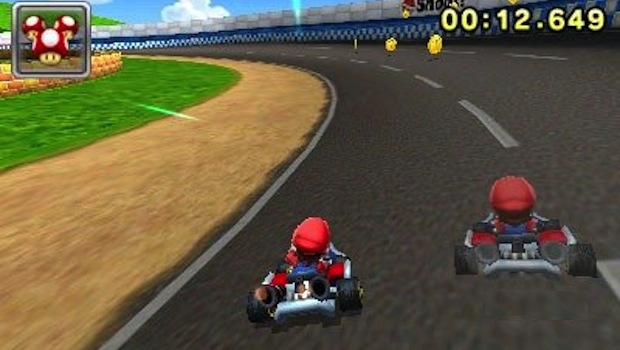
It reshaped the racing genre
Hardcore gearheads may bristle at the idea of their game taking cues from anything as unabashedly fun as Mario Kart, but the series' influence extends far beyond primary-colored racing adventures. Mario Kart didn't invent the idea of adding pickups or offensive play to the racing genre, but it's hard to imagine series like Wip3out or Rollcage gaining traction in the PS1 era without a nod toward Nintendo's hit.
Today, even with the series' increasing embrace of party-play, serious racing titles still carry the games' influence. It was Mario Kart that got players expecting ghost data from other games' Time Trial sections, and the series' rambunctious tone has influenced self-confessed fans on the staff of games like Blur and Split/Second.
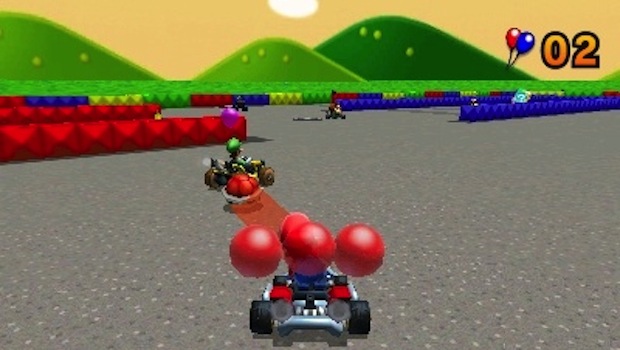
Not just racing
Sure, if you dry-heave at the mere thought of pressing a button to go fast and another one to go into a power-slide, you'll have a hard time loving Mario Kart because that's what the series is. But assuming your response is at least somewhat less extreme, don't write the games off just yet.
Outside the obvious options of solo/group race and championship play, Mario Kart's best-loved side-attraction is probably the series' Battle Mode, which has long been strong enough to support plenty of good times without even going near the proper game. Later entries have seen Battle Mode expanded with multiple play modes and increasingly imaginative course design, highlighting ideas too weird to fit onto a standard course.
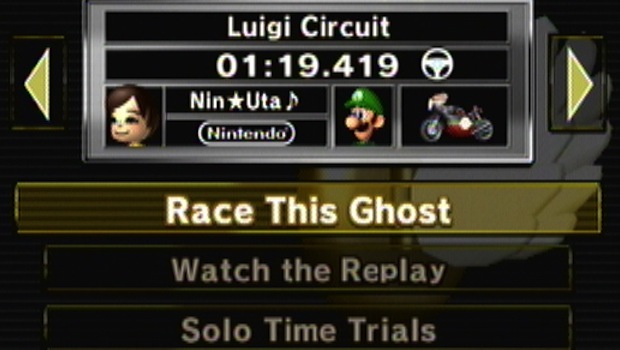
You are your own worst enemy (apart from the dev staff)
How do you know you're really starting to feel Mario Kart? Usually it's around the time you stop watching the leader tables and start paying attention to race times. Coming in first is fine, but scraping by in .02 of a second is a heckuva thrill to say nothing of those glowing numbers that indicate you've placed a new record time.
After winning all the championships and driving friends away with your incomparable shell-avoidance techniques, Mario Kart's still packed with many hours' worth of challenge in the form of Time Trials that let the games' exacting course design shine. Later titles include records placed by the games' staff, giving habitual first-placers somewhere to go for a little humbling.
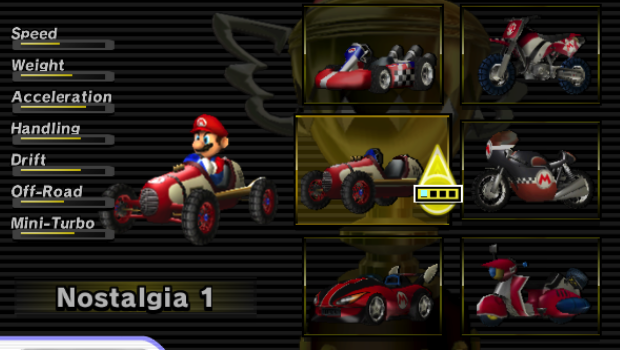
The world's least realistic driving sim
It's not enough that Mario Kart offers by far the most accurate simulation of what it's like to be an undead turtle driving a superpowered banana over fields of liquid magma, though let's acknowledge that accomplishment in and of itself. No, the series' real bait-and-switch is to take the controls, strategies and challenges of an exacting racing sim, then boil them down until they're brightly-colored and fit for polite public consumption.
This painstaking depth is an element not many competitors picked up on, which is why you're not playing Street Racer 7 today. If Super Mario Kart had been a moderately engaging speed-run around courses with the same color palette as Super Mario World, it would have sold comfortably and we'd all have moved on with our lives. But long-term play reveals a deceptive depth in the game's design, which set a high bar right from the series' first entry.
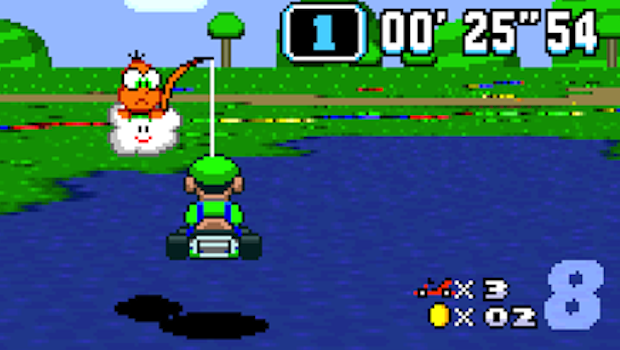
The learning curve
Everyone likes when a game's easy to play, hard to master but really, how difficult is that to pull off? Start with a tutorial, introduce superpowered mutants halfway through, put lots of spikes and fire in the last level boom, instant difficulty curve.
Titles that truly fulfill the promise of easing players in and gradually ramping up the challenge are a little harder to list. But if your game lets first-time racers scrape by with a placement on their premiere race, even while continuing to pose higher-level challenges for veteran players, then it's probably doing something right.
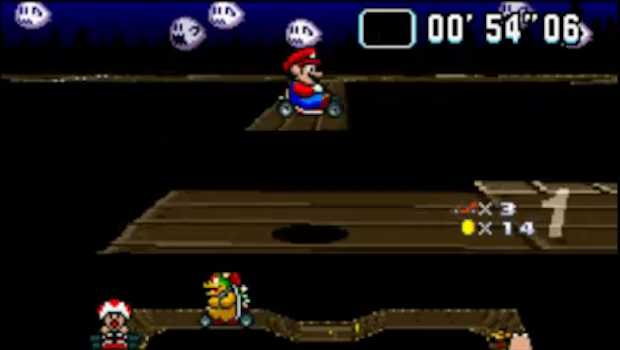
The hidden bits
It wouldn't be a proper racing game if players could just sneak past half the obstacles but it wouldn't be a proper Mario game if there weren't at least a few opportunities to show off your course-smarts. Accordingly, all the way back to the SNES original, the series has rewarded observant players (ahem, and those able to read an FAQ) with the odd well-placed secret.
Sometimes it's the alternate route for skilled players only; other times it's a shortcut that can only be accessed with the right item, such as SMK's abandoned (and otherwise useless) Feather. The series' tricks and shortcuts aren't liable to turn a dunce into a winner but they can make placing first feel that much more hard-earned.
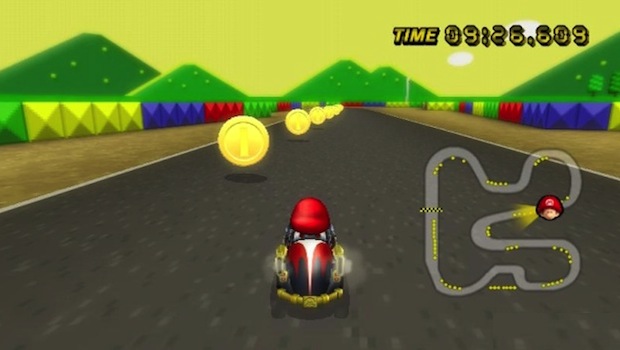
Backwards and forwards, all at once
Nintendo's often accused of coasting on past glories, usually by people who've never even had the option of just selling A Link to the Past to everyone on Earth three times over then putting their feet up, so who's to say they'd do any better? But anyway, Nintendo has had that option, and yet the company keeps on getting the balance between novelty and nostalgia just right at least within the Mario Kart series.
The series' accumulated roster of courses mean new titles will typically feature a game's worth of new tracks, plus just as many reimagined arenas from previous titles. It's a great way of getting veterans and newcomers quickly onside that, and...
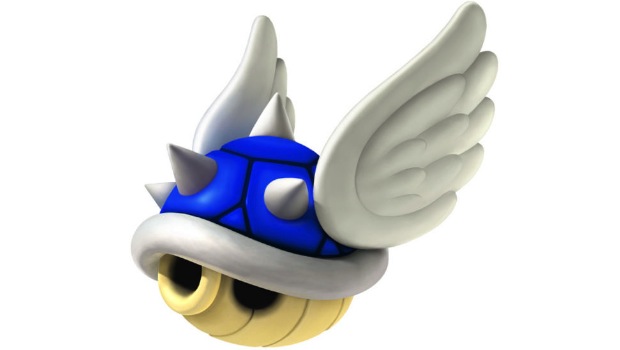
The pickup you love to hate
Because Nintendo's a responsible provider of entertainment media, it has to give you a reason to turn the game off sooner or later. The first Mario Kart lacked such an element, which is why nothing of any consequence happened for several months in 1992; fearing crisis, the world's leaders had Nintendo invent the Blue Shell, arguably the single most recognizable piece of crummy game design ever not to be a crate.
Everyone hates the Blue Shell, whose function is to zoom from the rear to the front of the pack and handicap the racers furthest ahead of the pack. An element only rewarded to losers, and designed to target only winners? Why, it's the closest thing videogames have to Socialism! (With the possible exception of Civ V's Socialism perk). Some of us don't actually have a big problem with the item... but then some of us are just really good at maintaining a decent lead, apparently.
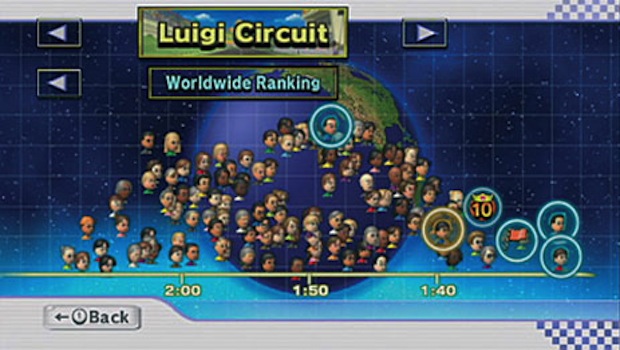
It gets online play right
Oh Nintendo, with your maverick Internet strategy, and your continued insistence that online play ain't all that, and your goldurn gosh-falutin' Friend Codes. There are probably children on the Internet who've been saved from pervert-abduction specifically because their console uses Friend Codes, and even those kids hate Nintendo's online policies. You know, except for Mario Kart.
Yep, playing Nintendo games without a simple XBLA/PSN-style meetup service is a bitch... except for Mario Kart. And entering Friend Codes to prove (somehow) that you didn't just meet someone on a forum is a trial... except for Mario Kart. It's not that Nintendo's bad at online play; it's just that the company's set up a perfect network for playing Mario Kart on, and then made the mistake of trying to add some other games.
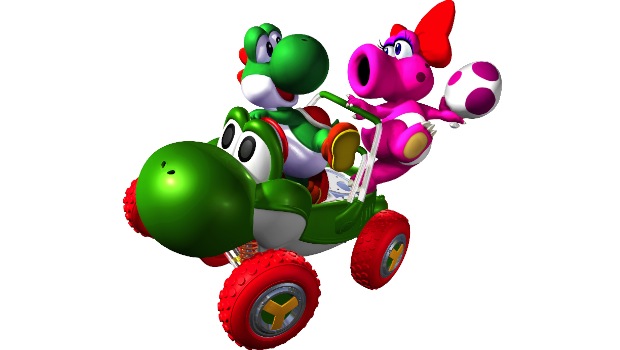
The B-list
As the series grows, Nintendo's kept adding larger rosters and increasing the emphasis on lesser-known characters. Which is great if you're pursuing a doctorate in Mushroom Kingdom Geopolitics, but also a bonus for players who get a kick out of winning championships with gaming's first confirmed transsexual.
Besides these debatable gains, the series' emphasis on bit-characters allows for an ever-growing list of character-themed stages. You may be lukewarm on Wario and Waluigi, but if it weren't for those lovable crypto-fascists, we wouldn't have Waluigi Stadium. Fair trade! Maybe.
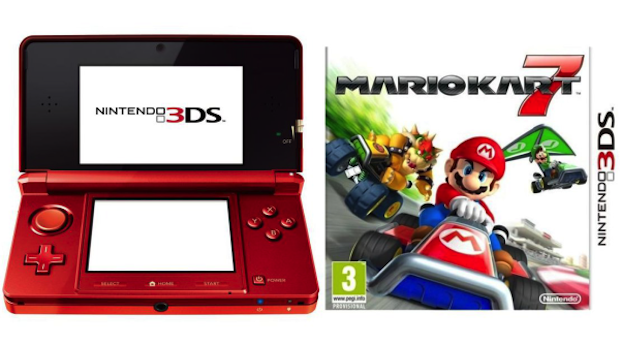
It's always a flagship title
Statistically speaking, if you had a SNES, you most likely bought it for Street Fighter 2 or Mario World. And statistically speaking, if you had an N64, you probably bought it for Mario 64. But practically speaking, if you had any Nintendo console, you probably bought it because sooner or later it would have Mario Kart and you knew that deal was going to blow up large.
Mario Kart 7's arguably the hardest Nintendo's pushed a Kart title yet, positioning the game as the 3DS' first must-have original. That'll be why our Mario Kart 7 review said the game was single-handedly worth the asking price of the console itself. Many would say the same of the DS, Wii and Gamecube iterations. Hell, if you find a SNES in a thrift store with SMK super-glued into the slot, that deal's still going to blow up large.
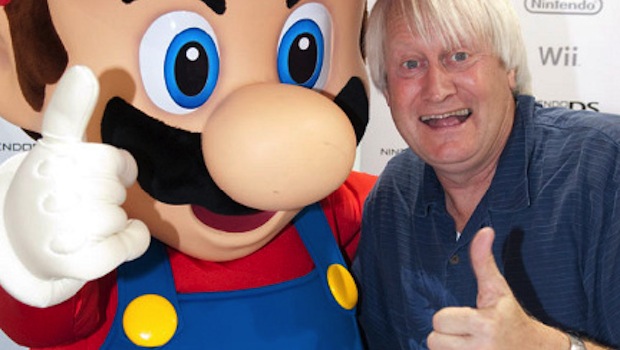
Charles Martinet gots bills to pay
You know Charles Martinet: he's the squeaky-voiced Nash Bridges bit-player who's been voicing Mario since the N64. But whereas Chruzu-San's debut contribution was limited to a few well-placed yips and cheers, it's the Kart series that's allowed the voice of Mario to really flesh out his assigned characters.
While platforming doesn't tend to offer much in the way of opportunities for self-expression, put Nintendo's creations into go-karts and watch them become quite the little gang of gasbags. Suddenly it's number-a one this and next tiiime! that, and all manner of cutesy little vocal grabs that've become catchphrases among fans and presumably a new wing on Casa de Martinet.
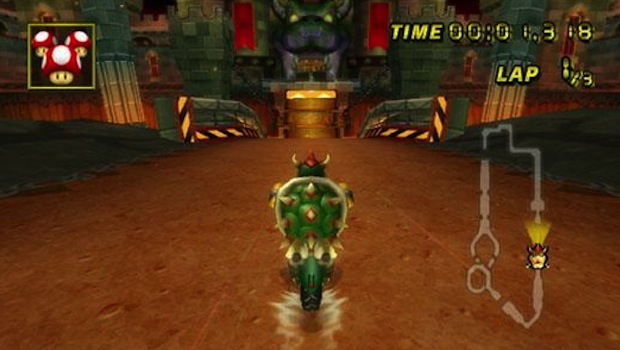
Consistent variety
The Mario Kart series began in the Super Mario World era, and has continued to take cues from 20 years' worth of new titles. Racing on courses from and inspired by Mario 64, Sunshine and the like has provided narrative continuity for players who (for whatever reason) demand internal consistency from their games about talking fungi and evil croco-dino-turtle-things.
It's also worth noting, though, just how well the series has managed to retain the feel of specific course families. Later entries in the series have plenty of elements that couldn't be dreamed of on the SNES or GBA and yet the new additions to existing locations manage to feel true to the 1992 originals. Bowser's Castle's still lined with infuriating stone walls, Mario Circuit's still tight but fair, and...
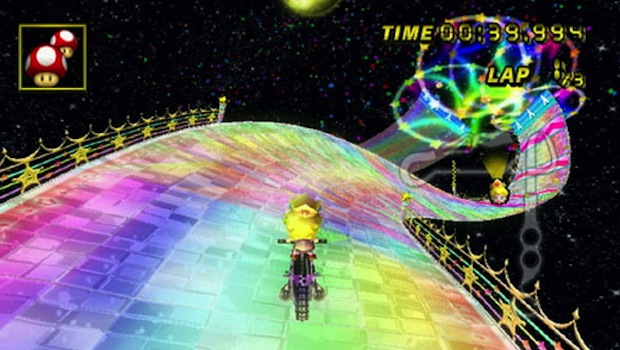
Rainbow Road's still madness-inducing-tastic
The first time you unlocked Rainbow Road, you were probably pleasantly surprised, followed quickly by daunted, followed soon afterward by disappointed at spending most of your time falling off the track and placing last.
And whatever MK game you played most recently, unlocking Rainbow Road probably came as less of a surprise but once that's out of the way, odds are you still spent most of the race falling off the track and marveling at how far you'd overestimated your own expertise. No matter how welcoming and party-friendly Mario Kart gets, by the time you're racing the game's final track, you'll be hard-pressed to deny the series' consistent challenge.

Party play
If we had a dollar for every time someone complained about MK's "rubberband AI" and rigged matches, we'd have... considerably less money than the company that gets $40 every time someone decides those things really aren't deal-breakers. Sure, it's galling for a veteran player to lose the pole position to a first-timer on a run of good pickups. And yet, for every guilty leg-up or frustrating, transparently rigged match, somehow the true talent finds a way of rising to the top over time. Just like America.
Besides, if you're playing a game where a talking mushroom shoots fireballs at a monkey driving a turbo-powered baby carriage, you're probably open to the idea that videogames should be fun. Mario Kart with a roomful of mixed-skill players might not be the most exacting of competitive challenges, but it's certainly fun, provided we've roughly the same definition of that word.
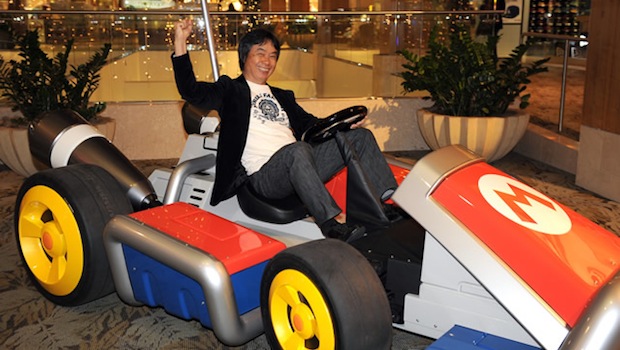
It's still what Nintendo does well
Nintendo's gone through a lot in the 20 years since Mario Kart's release - including successes, missteps, infuriating mishandlings and deft reinventions of its considerable backlog of properties. But throughout it all, the company's kept on making machines you can play Mario Kart on, and it's kept on making Mario Kart games to play on them.
Naysayers may argue that you're always going to be doing the same thing: driving around colored courses picking things up and swearing at talking monkeys. But besides trying new tricks every time, we're also talking about a series that invented a new genre in its first iteration; you can forgive subsequent games for sticking to the formula somewhat.
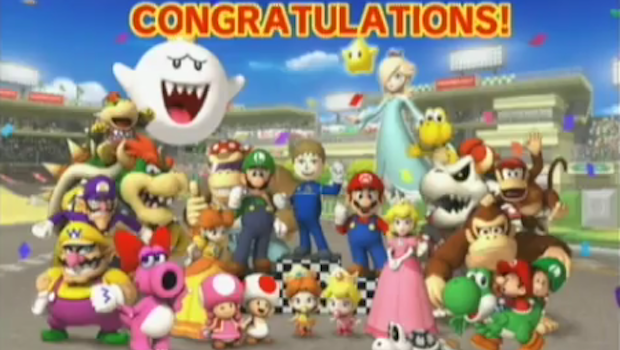
We just can't quit
By this point in our lives, it's just a bit late not to be loving Mario Kart. The series has had ample opportunity to disappoint and it's never done so, incorporating even the silliest of innovations with skill and panache. You'd be hard-pressed to find a series that's been running this long without the occasional notorious misstep. Witness Hotel Mario, Zelda: The Wand of Gamelan or Final Fantasy: Mystic Quest.
But the simple fact is that in 20 years, no one's ever made a crap game with Mario Kart in the title, and no one's done Mario Kart like Mario Kart does. Here's to another 20 years of selling systems, challenging players, and refusing time after time to finally just man up and take that damn Blue Shell off the items list...
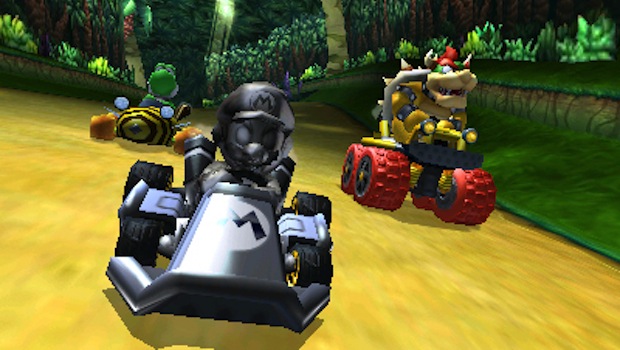
Not to mention...
So that's 20 of the things we love about Mario Kart - but if we were the only ones playing for these last two decades, it'd be a pretty lonely fan club. Have you, by chance, enjoyed the series for reasons not covered in our far-from-exhaustive love letter?
Or maybe you're one of those readers, and you think we've been a little too effusive? Or, ahem, let certain powerups off the hook a little easy? Alternatively, maybe you just have a really good lap-time you'd like to share with us. In any case, let's hear from you.
We're-a Gamesradar! We're-a gonna win! At, um, reading your comments.


